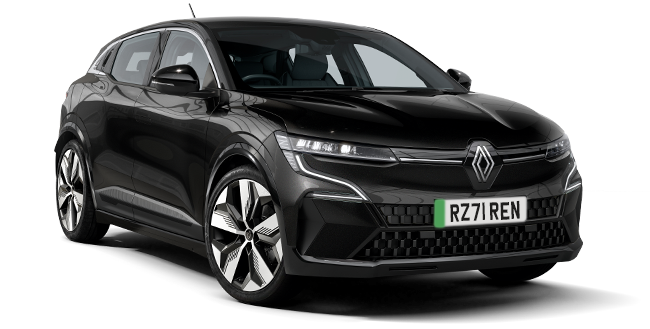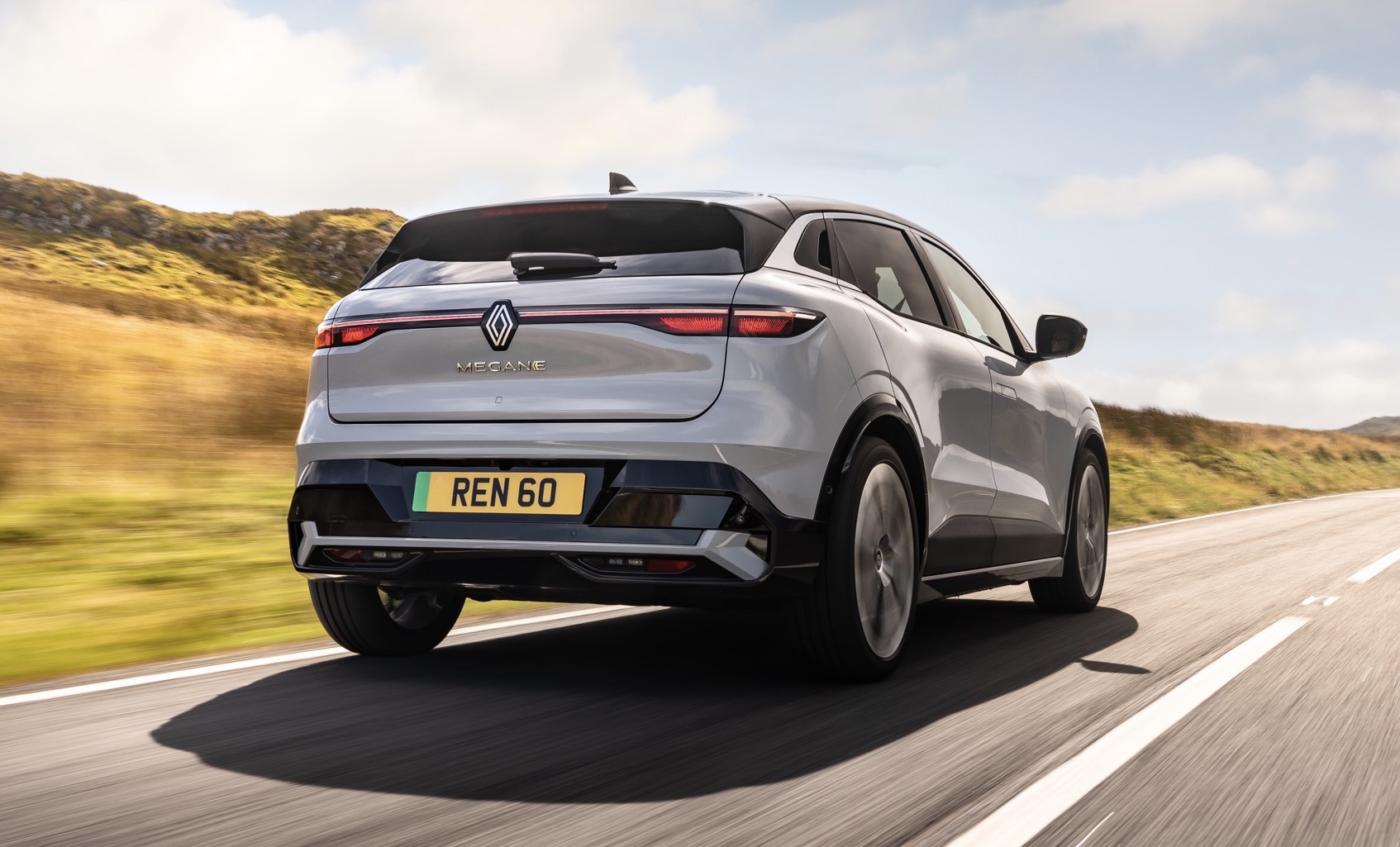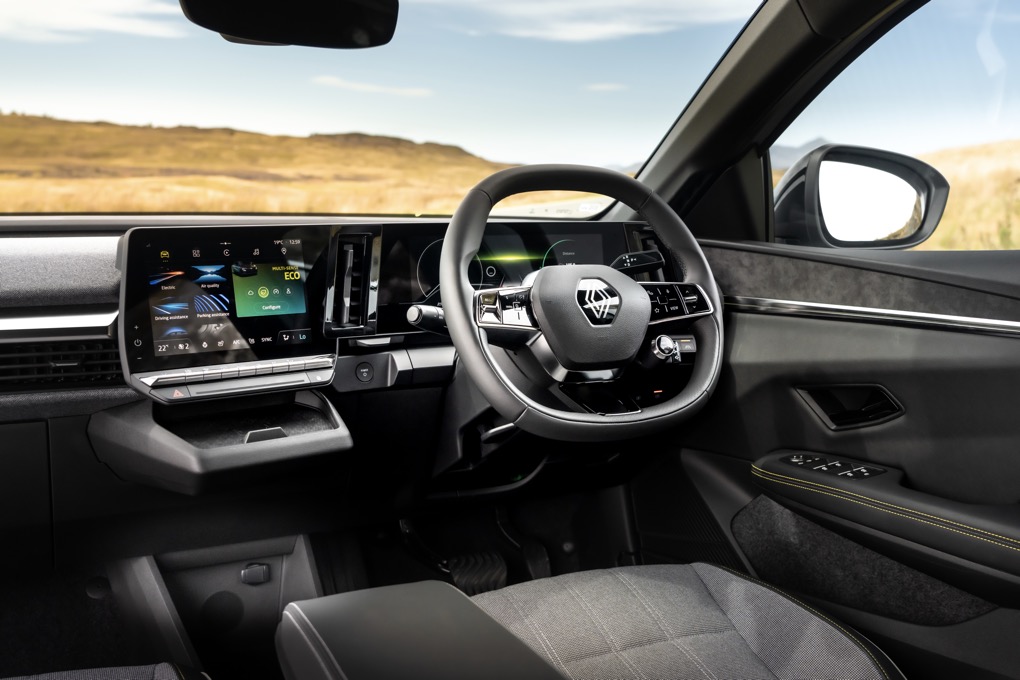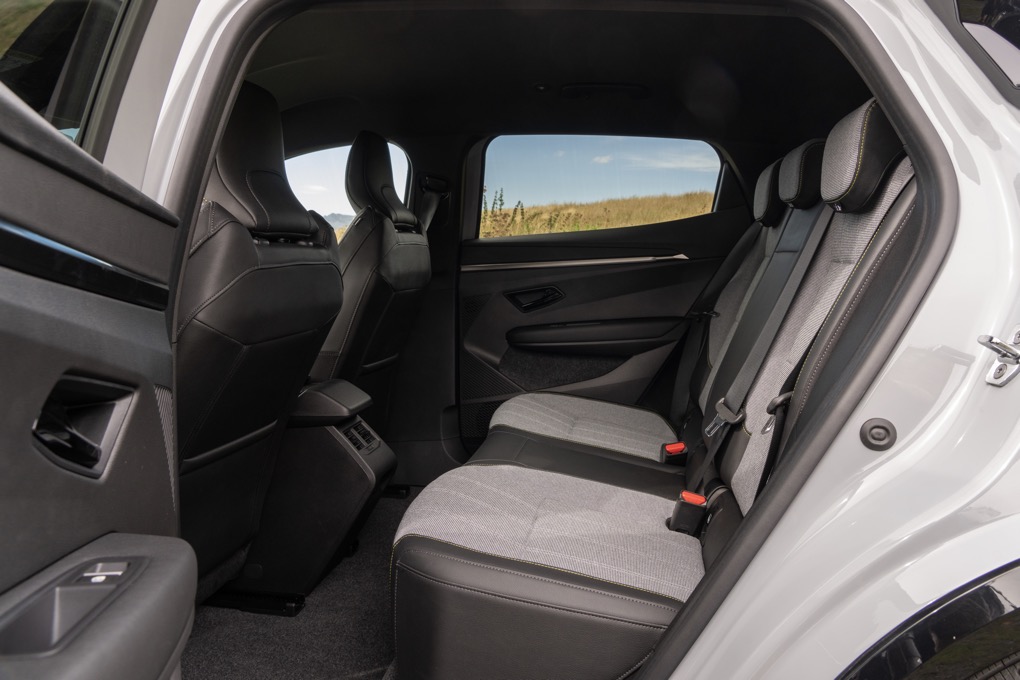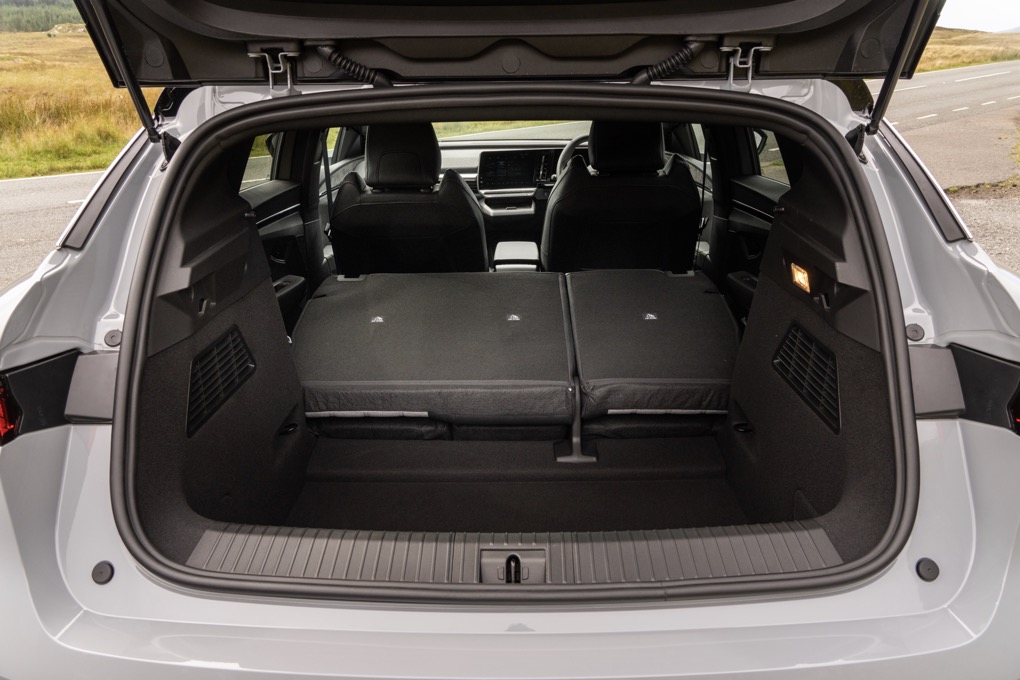Range
The Renault Megane gets a WLTP range of 280 miles, which isn’t bad for the battery size, but you can get bigger batteries with longer range potential in the VW ID.3 and MG4. More importantly, it’s a shame that we haven’t seen great real-world efficiency. In everyday use, you’ll see more like 160- to 220 miles in real-world use, depending on conditions.
DC rapid charging tops out at 130kW, which is good enough for a 20-80% charge in 30 minutes on a 150kW charger – competitive with most rivals. There’s no vehicle-to-load function, so if that’s important to you then check out the MG4, Kia Niro EV and Hyundai Kona Electric.
Battery
Renault offers the Megane E-Tech with a 60kWh usable lithium-ion NMC battery (65kWh total capacity). It’s a slim, mattress-style battery that is hidden in the floor of the car. As you’d expect, Renault covers the battery with an eight-year, 100,000 mile warranty – and will also refurbish or replace the battery if the car’s range potential drops below 70% of the as-new performance.
All batteries degrade over time, but as a very rough estimate you should expect to lose around 15% of an electric car’s potential range over the first 10 years and 100,000 miles. Lots of rapid charging can accelerate this, but if you don’t rapid charge too often and you keep the battery within 20-80% charge state when you don’t need the full driving range, you could see significantly lower battery degradation over the years.
Charging
DC rapid charging tops out at 130kW, which is good enough for a 20-80% charge in 30 minutes on a 150kW charger – competitive with most rivals. There’s no vehicle-to-load function, so if that’s important to you then check out the MG4, Kia Niro EV and Hyundai Kona Electric.
The Megane uses the same CCS and Type 2 sockets as almost every electric car. These are the European standard socket type, and so the Renault will be compatible with almost every public charging station in the UK and Western Europe. The socket is located on the front, driver’s side wing of the car, and you’re provided with the Type 2 cable you’ll need to charge at a home charger. Plug into a standard 7kW home wallbox and you’ll have a full charge in under ten hours. Unusually, the Renault gets 22kW AC charging as standard.
If you want to slow charge at a standard three-pin domestic socket, you’ll need to pay a bit extra for the necessary cable. Bear in mind that ‘granny charging’, as it’s often known, will only get you roughly 10 miles of additional range per hour. Still very useful for those overnight stays with friends or at a holiday cottage, though.










